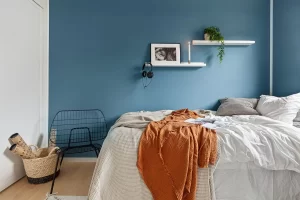How to Showcase and Display Your Art Collection

Creativity can be highly intuitive and spontaneous, providing emotional release and therapeutic healing through artistic expression. Many artists also find that working collaboratively with fellow artists helps spark new ideas and break through creative blocks.
Still, the paradigm of feeling-expression remains prominent. People commonly hear phrases such as: “That jazz saxophonist really expresses his emotions!” or, “That gesture drawing has so much expressiveness!”
1. Organize Your Collection
One effective way to display art in your home is by placing pieces at various places around it. This creates visual interest while maintaining balance. You may even combine pieces with items such as vases, books or photographs for an eye-catching vignette effect.
As you arrange your gallery, it is vitally important to consider the scale of each work. A small work hung on a large wall looks out-of-place while one placed against a smaller one can make its presence felt much more clearly.
Inventorying your art collection is another effective way of organizing it, although it might sound daunting at first. Once complete, however, you will have a living archive of every work in your collection plus business contacts, financial documents and appraisals stored all within Artwork Archive for easy reference and storage – creating organizational bliss! Give it a try now by opening up a free account on Artwork Archive today.
2. Create a Moodboard
Mood boards are used by creative professionals to evoke emotions and share them with others. From graphic designers preparing client presentations, to interior decorators sharing design concepts or even couples planning their wedding day – visual landscapes provide a powerful way of communicating one’s vision.
Begin your project by collecting visual elements that relate to its theme. Look for inspiration in movies, fashion editorial shoots, art works, fabric samples or color swatches as well as objects or architecture.
Not only can images help, but you can also include short descriptions to provide context. William Yarbrough did just this with his “Summer Travel” mood board by using travel-themed icons and photography. Whether the process takes place online or physically, finding the ideal mix of elements takes time and patience but can be truly rewarding in the end!
3. Add a Frame
If your collection comprises glasses in various sizes and shapes, try mixing them for an informal yet still aesthetically pleasing effect. Play around with different frame colors for added flair!
For a more refined arrangement, pair paintings that share similar colours and patterns together for an overall sense of harmony in your room. Select frames that complement this hue palette for an additional touch of high-end style.
Rather than hanging your art in traditional frames, why not display it on a picture ledge instead? Combine it with other household objects like plants and ceramics for an eye-catching vignette!
Use binder clips or simple picture nails (and perhaps other pieces of home decor) as an unconventional and unique method for mounting prints on the wall without frames for an eclectic and playful display of art, especially with larger works. This works particularly well when dealing with extra-large prints.
4. Hang It
Displaying art can be an integral component of an inviting room design, yet can be tricky. Achieving balance through scale, balance and composition as well as style and mood is key – an easy mistake would be hanging too small of an item in an area or too much art all together.
As a rule of thumb, art should be hung so its center is approximately 57 inches from the floor – this will create an eye level arrangement and help your collection appear coherent and harmonious.
Historic homes may feature built-in mouldings that make hanging art easier (provided your landlord allows it). Otherwise, use a picture rail instead; this reduces the number of holes needed to hang artwork and can even help renters manage multiple pieces at the same time. Adding multiple smaller-scale works at once gives an elegant display technique for viewing art!


